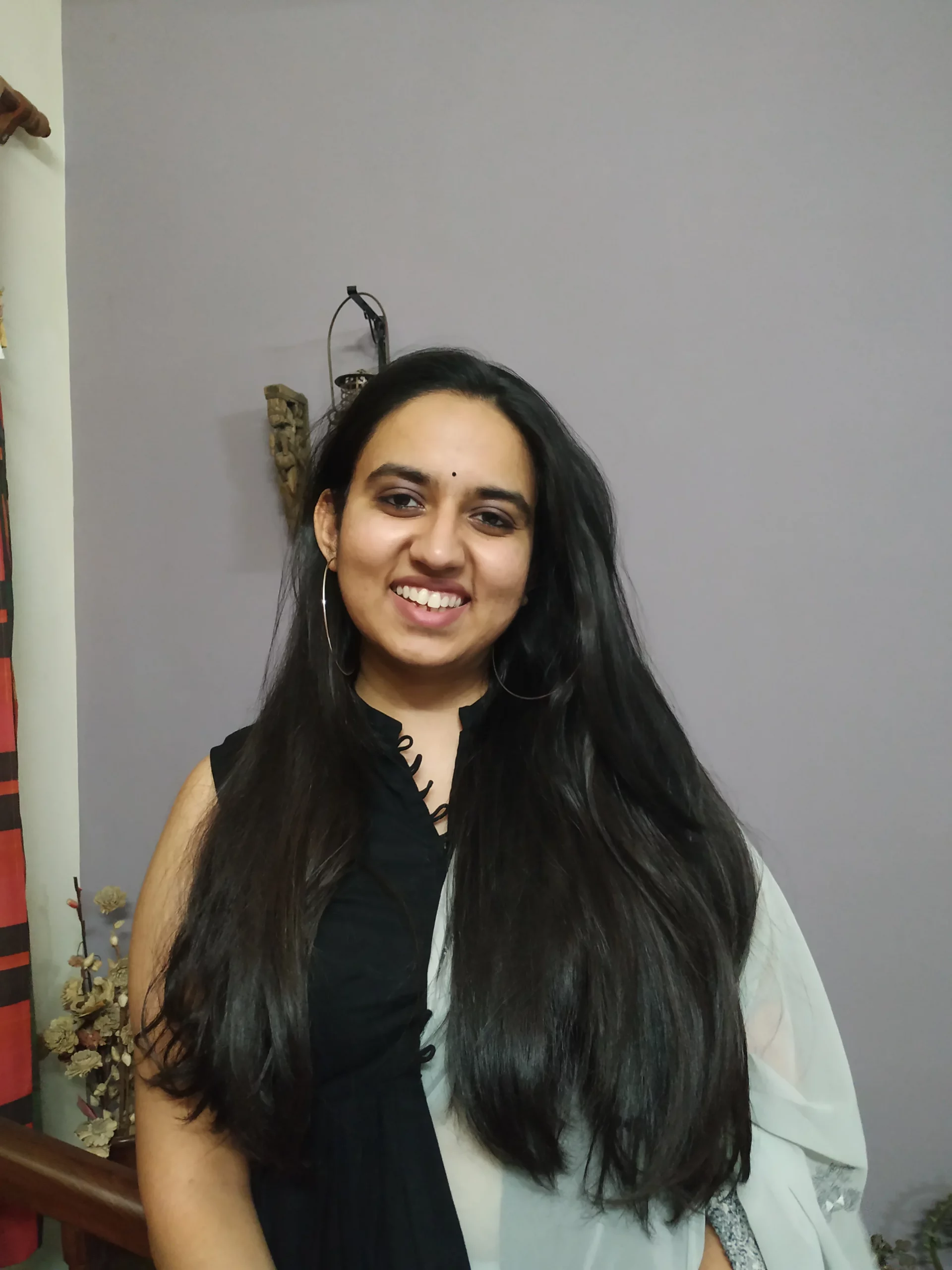Fun With Flags: What Different Pride Flags Mean
A flag is a representative of the fundamental objectives of the community that it represents. It is not merely merchandise but rather physical evidence of a community’s history. While the rainbow pride flag is a capitalist’s paradise during June, we have other flags with their own meaning to represent the queer community. Let’s take a look at how colors weave through a community’s essence.
1) RAINBOW FLAG
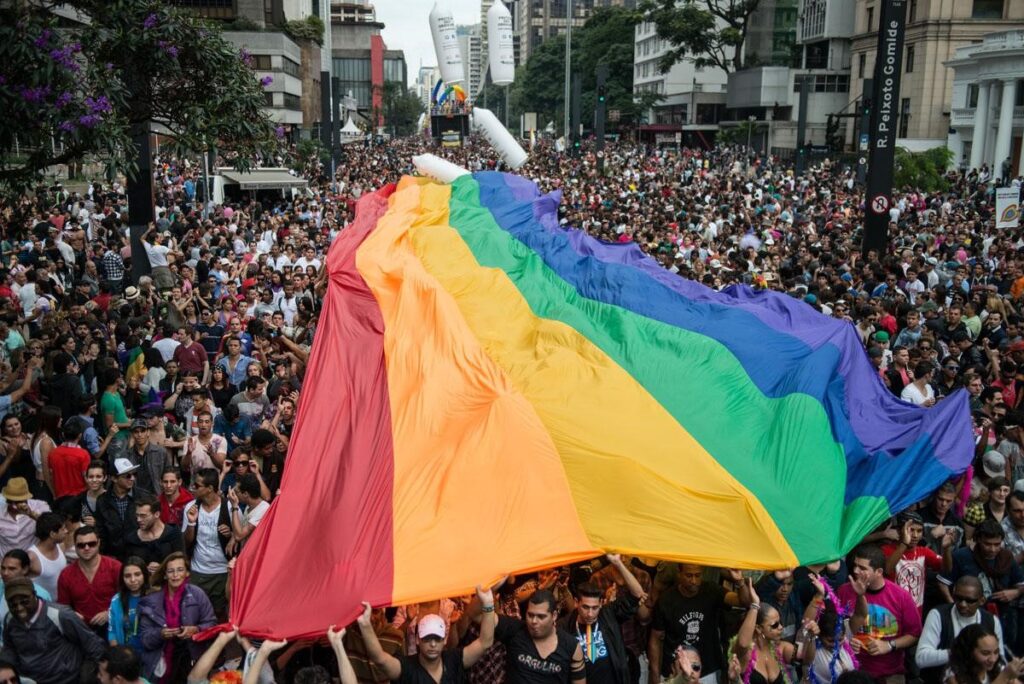
Originally designed by Gilbert Baker in 1978 as a symbol of hope and liberation for the LGBTQ+ community. It had eight horizontal stripes, each color depicting a different emotion. After the assassination of a politician belonging to the queer community, the demand for the pride flag increased. Because of the pink color shortage, the flag was sold in only seven colors (1978-1999). Today, the rainbow flag has only six colors (allegedly, it is easier to produce and use in parades). The flag changed over time because of circumstantial reasons. However, it never faltered to be a symbol of unity for the queer community.
RED: LIFE
ORANGE: HEALING
YELLOW: SUNSHINE
GREEN: NATURE
BLUE: HARMONY
2) BISEXUAL FLAG
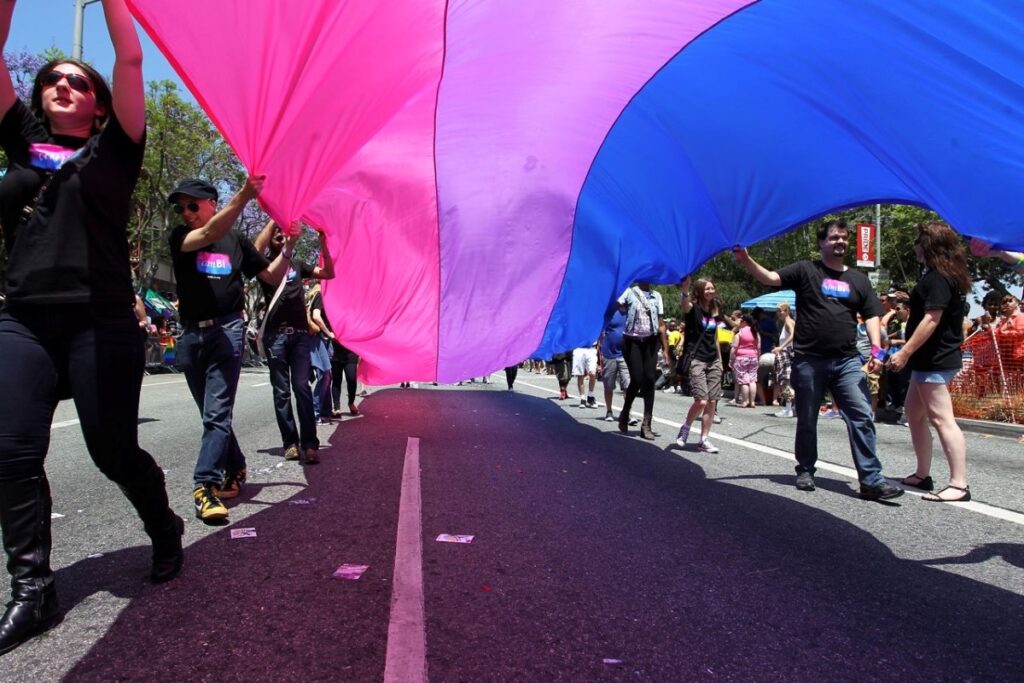
Introduced in 1998 to represent the bisexual community within the LGBTQIA+ community by Michael Page. This pride flag consists of three colors, a broad magenta stripe on the top, a broad royal blue stripe at the bottom, and a narrow lavender stripe in between. It serves as a metaphor for how the lavender pixels blend in with the magenta and blue. Similarly, bisexual people blend unnoticeably into the gay/lesbian and straight community.
MAGENTA: SEXUAL ATTRACTION TO THE SAME SEX
LAVENDER: SEXUAL ATTRACTION TO BOTH SEXES
ROYAL BLUE: SEXUAL ATTRACTION TO THE OPPOSITE SEX
3) AROMANTICISM
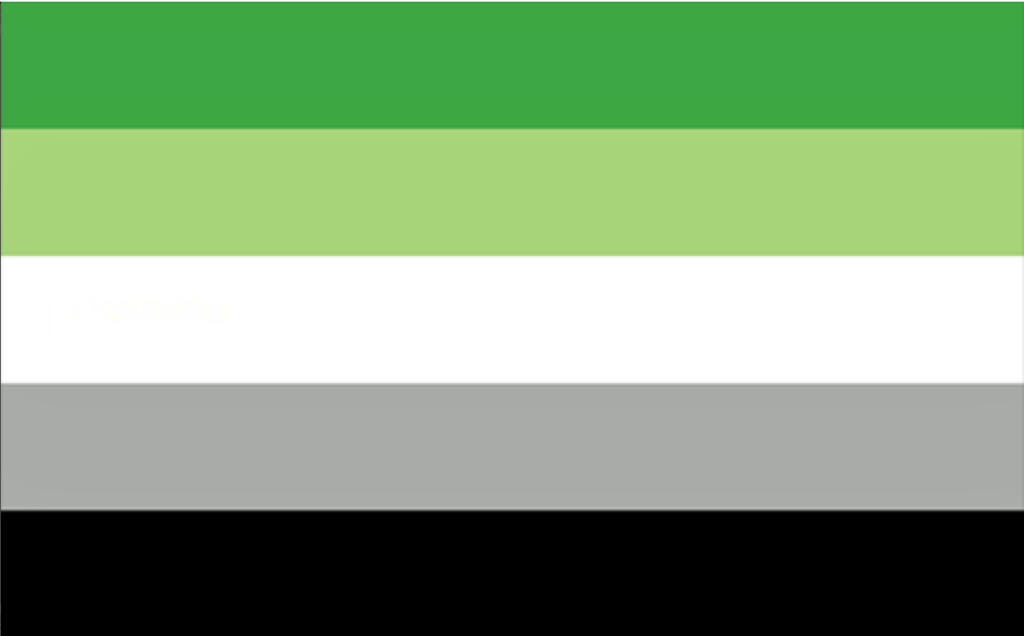
This pride flag consists of five horizontal stripes that represent the aromantic spectrum. Aromantic people do not feel any romantic attraction (they may have a platonic relationship with their partners) but may still enjoy sex.
GREEN: WITHOUT ROMANTIC ATTRACTION OR DIFFERENT ROMANTIC ATTRACTION
GREY & BLACK: ALL AROMANTIC SEXUALITIES
4) LESBIAN FLAG
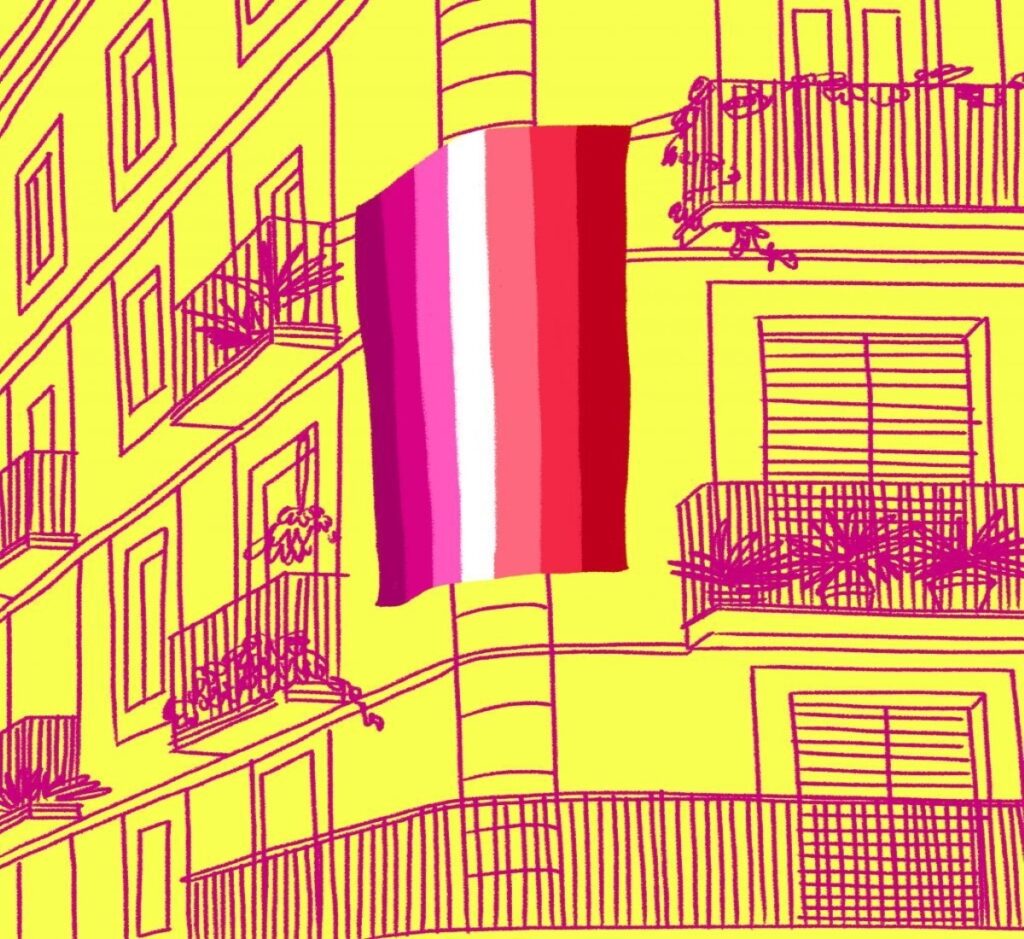
Even though there is no official flag for the lesbian community, the widely used flag is a seven-stripe pink-orange flag introduced on Tumblr in 2018. The other famous flags are the Labrys lesbian flag and the lipstick lesbian flag.
DARK ORANGE: GENDER NONCONFORMITY
ORANGE: INDEPENDENCE
LIGHT ORANGE: COMMUNITY
WHITE: UNIQUE RELATIONSHIP TO WOMANHOOD
PINK: SERENITY AND PEACE
DUSTY PINK: LOVE AND SEX
DARK ROSE: FEMININITY
5) ASEXUAL FLAG
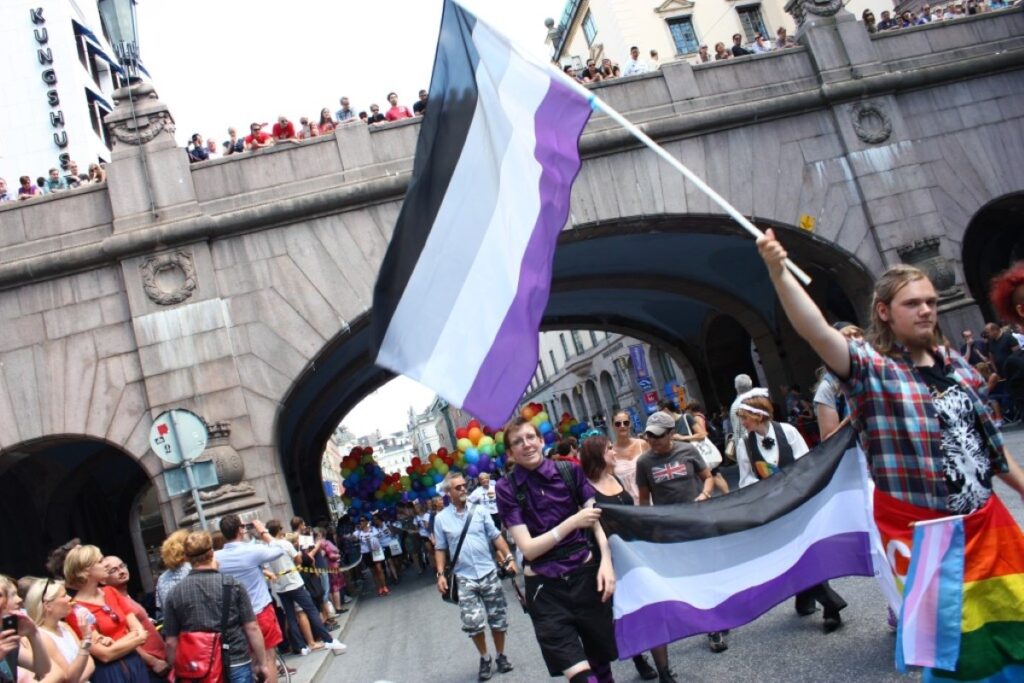
The Asexual Visibility and Education Network created this pride flag consisting of four horizontal stripes in 2010.
BLACK: ASEXUALITY
GREY: GRAY-ASEXUALS AND DEMISEXUAL
WHITE: ALLIES
PURPLE: COMMUNITY
6) DEMISEXUAL FLAG
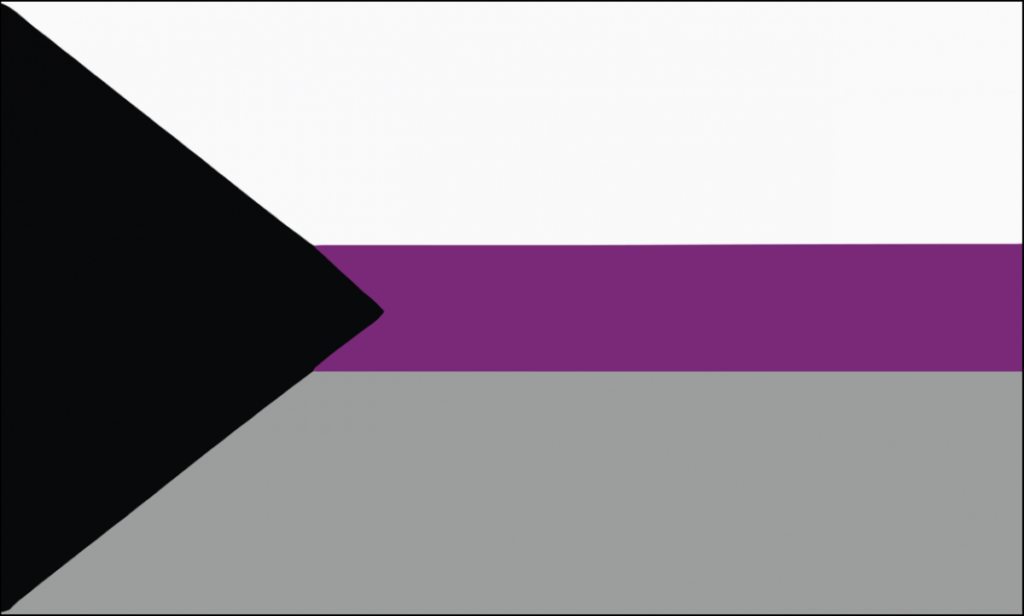
Demisexual is a sexual orientation on the asexual spectrum. Such people do not experience sexual attraction until they form a deep emotional connection with someone, romantic or platonic. It has the same colors as that of the asexual flag in a different layout.
7) PANSEXUAL FLAG
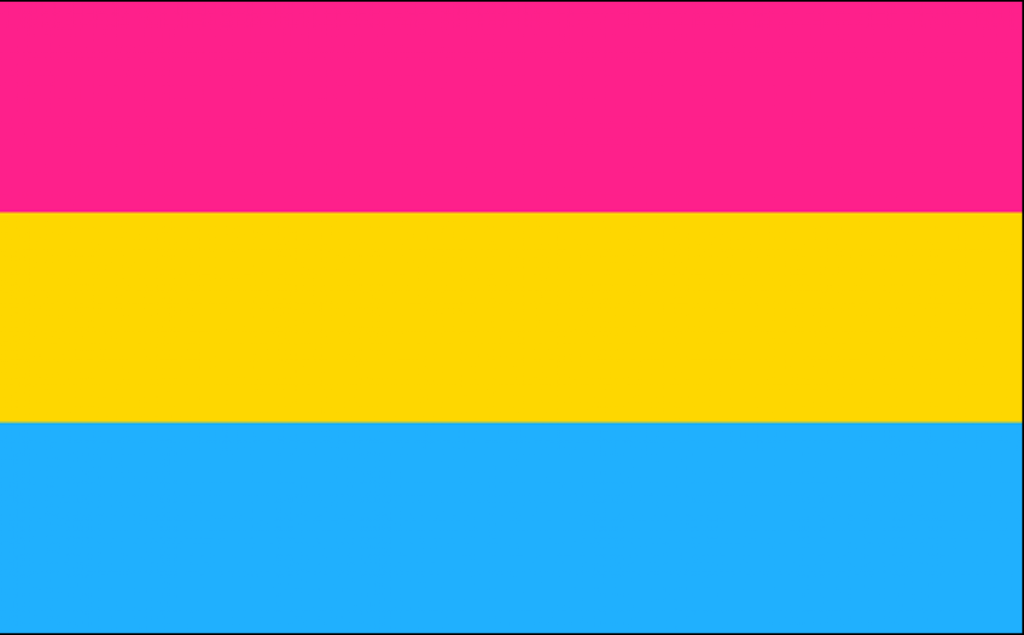
his flag was made in 2010 to separate pansexuality from bisexuality. Pansexual is the very definition of loving the soul and not the body (David Rose’s term ‘love the wine and not the label’). Put in a simple way loving someone for who they are and have no reserve to their gender orientation.
PINK: WOMEN
YELLOW: NON-BINARY AND GENDER-NONCONFORMING PEOPLE
BLUE: MEN
8) INTERSEX FLAG
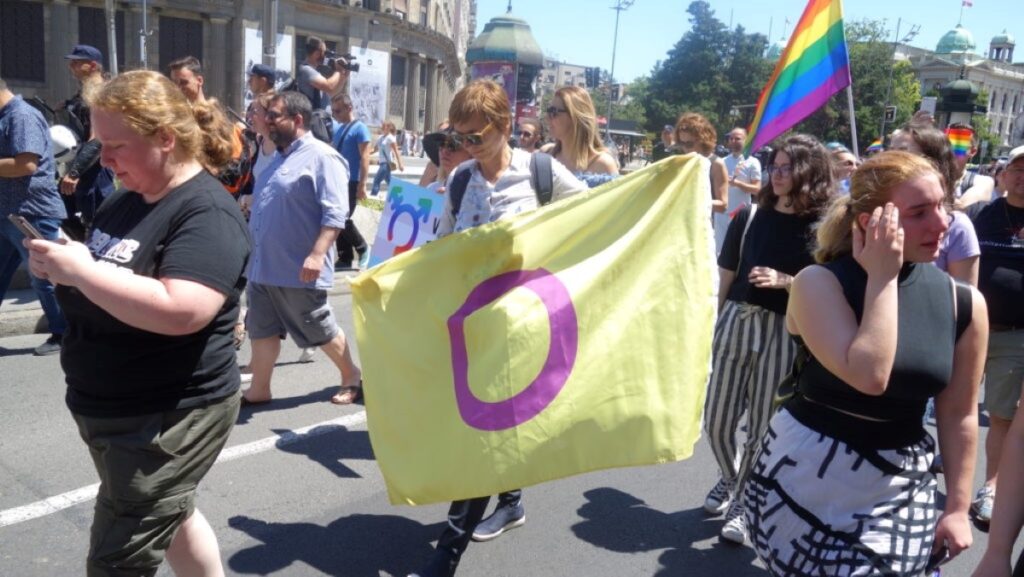
Morgan Carpenter of Intersex Human Rights Australia created this flag in 2013. They claimed, “to create a flag that is not derivative, but is yet firmly grounded in meaning.”
PURPLE CIRCLE: UNBROKEN AND UNORNAMENTED, SYMBOLISES WHOLENESS AND COMPLETENESS, COLOR IS NEUTRAL TO ANY BINARY GENDER
YELLOW: COLOR IS NEUTRAL TO ANY BINARY GENDER
9) NON-BINARY FLAG
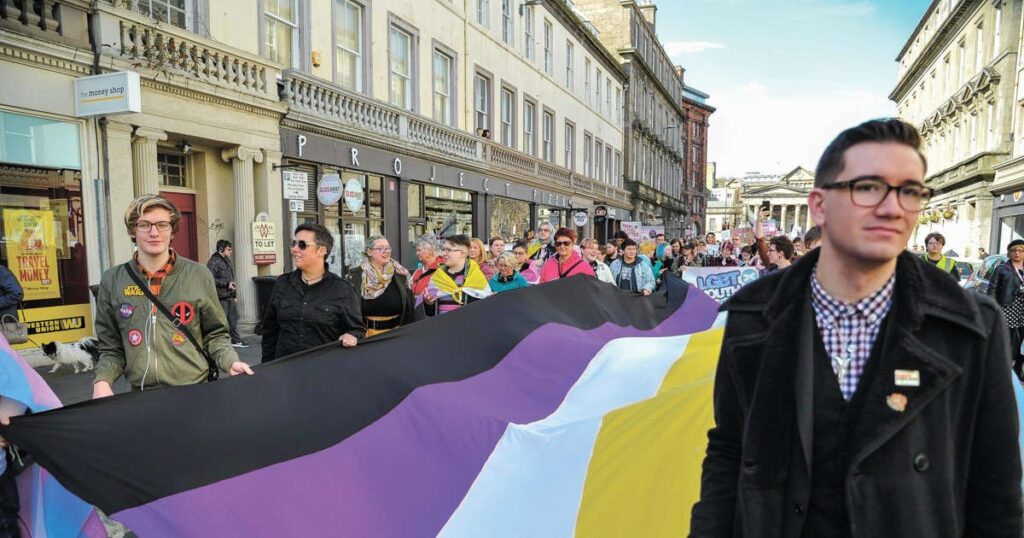
This pride flag was created in 2014 by activist Kye Rowan. People who are non-binary/genderqueer do not identify within the gender binary of male or female.
YELLOW: PEOPLE WHO IDENTIFY OUTSIDE OF THE GENDER BINARY
WHITE: NONBINARY PEOPLE WITH MULTIPLE GENDERS
PURPLE: PEOPLE WHO IDENTIFY AS A MIXTURE OF MALE AND FEMALE
BLACK: AGENDER PEOPLE
10) GENDER-FLUID/GENDER FLEXIBLE FLAG
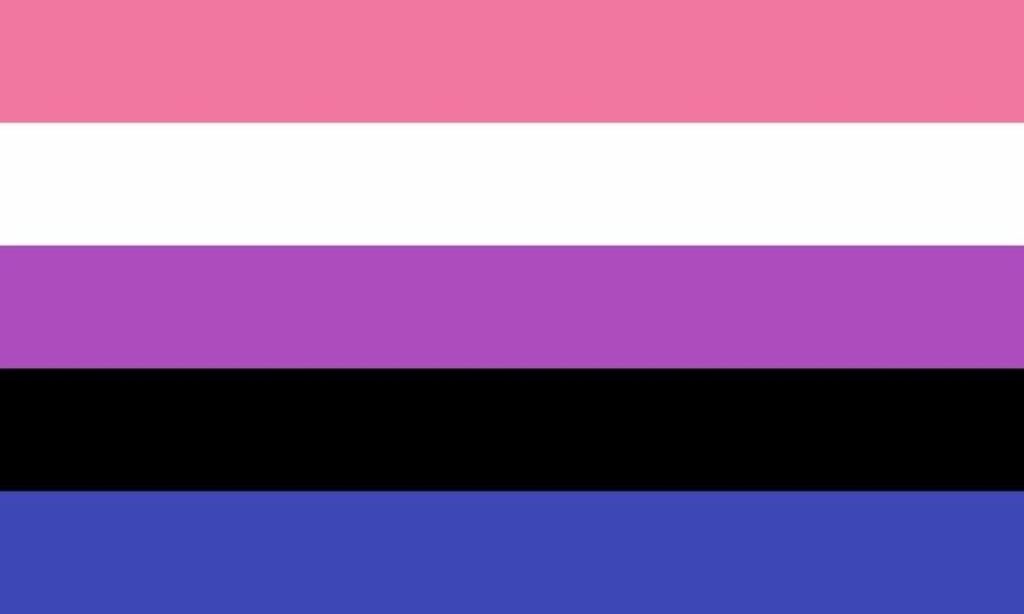
JJ Poole designed this flag in 2012. This pride symbol was designed such that it could encompass all that gender fluidity contains.
PINK: FEMININITY
WHITE: NO GENDER
PURPLE: COMBINATION BETWEEN MASCULINE AND FEMININE
BLACK: ALL GENDERS
BLUE: MASCULINITY
11) POLYSEXUAL FLAG
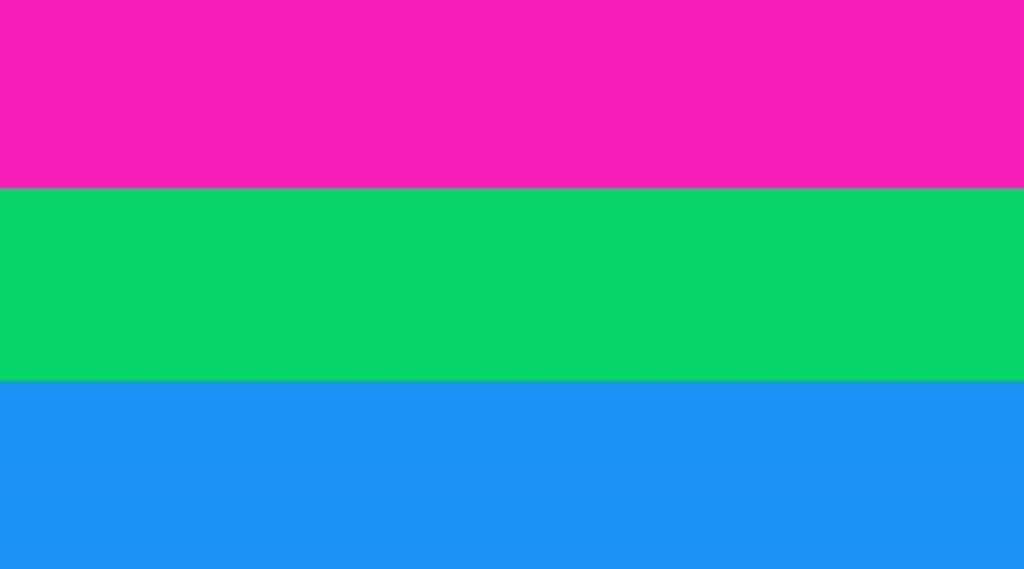
This flag was created on Tumblr in 2012. Polysexual people are attracted to multiple genders, not all, unlike pansexual individuals.
PINK: FEMALE
GREEN: NON-CONFIRMING GENDERS
BLUE: MALE
12) TRANSGENDER FLAG
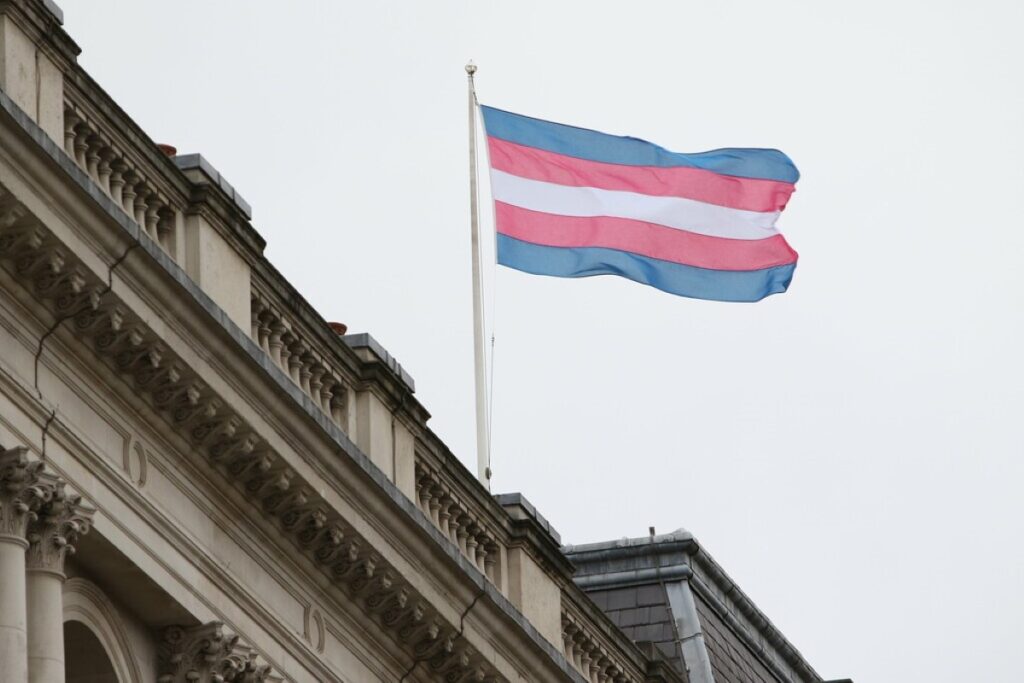
Monica Helms, a trans woman, designed this reversible pride flag in 1999. The significance of this five-stripe flag is that no matter which way one flies, it is always correct, which is a metaphor for trans people finding correctness in their lives.
LIGHT BLUE: TRADITIONAL COLOR FOR BABY BOYS
LIGHT PINK: TRADITIONAL COLOR FOR BABY GIRLS
WHITE: GENDER NEUTRAL
13) PROGRESS PRIDE FLAG
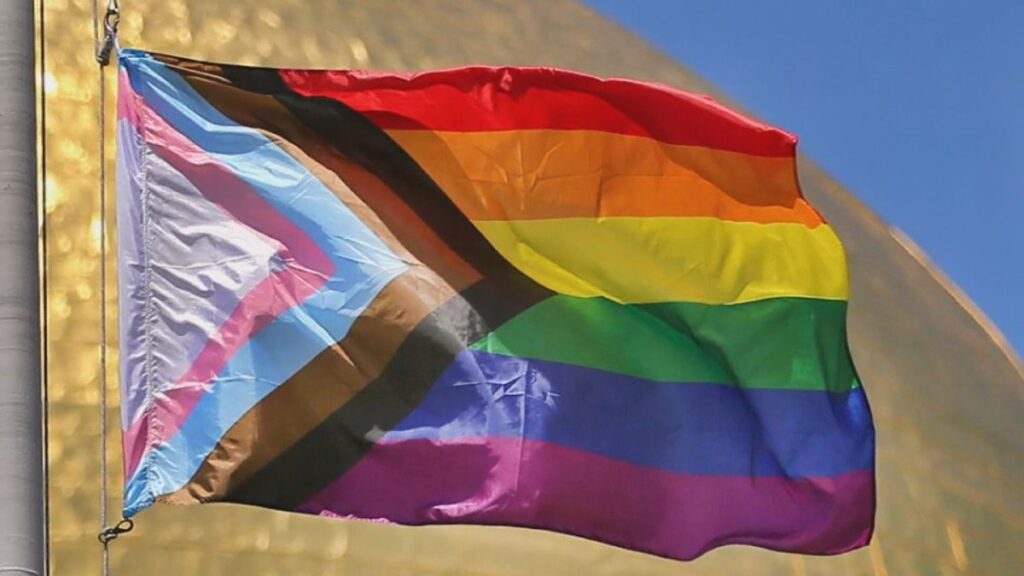
Created by artist Daniel Quasar in 2018 to make the pride flag more inclusive and progressive. A five-stripe arrow was added to the traditional six-stripe rainbow flag. The new pride flag is steadily replacing the traditional flag owing to its inclusivity of marginalized communities in the LGBTQIA+ community.
BLACK & BROWN: PEOPLE OF COLOR
PINK, BLUE & WHITE: TRANSGENDER PEOPLE
14) AGENDER FLAG
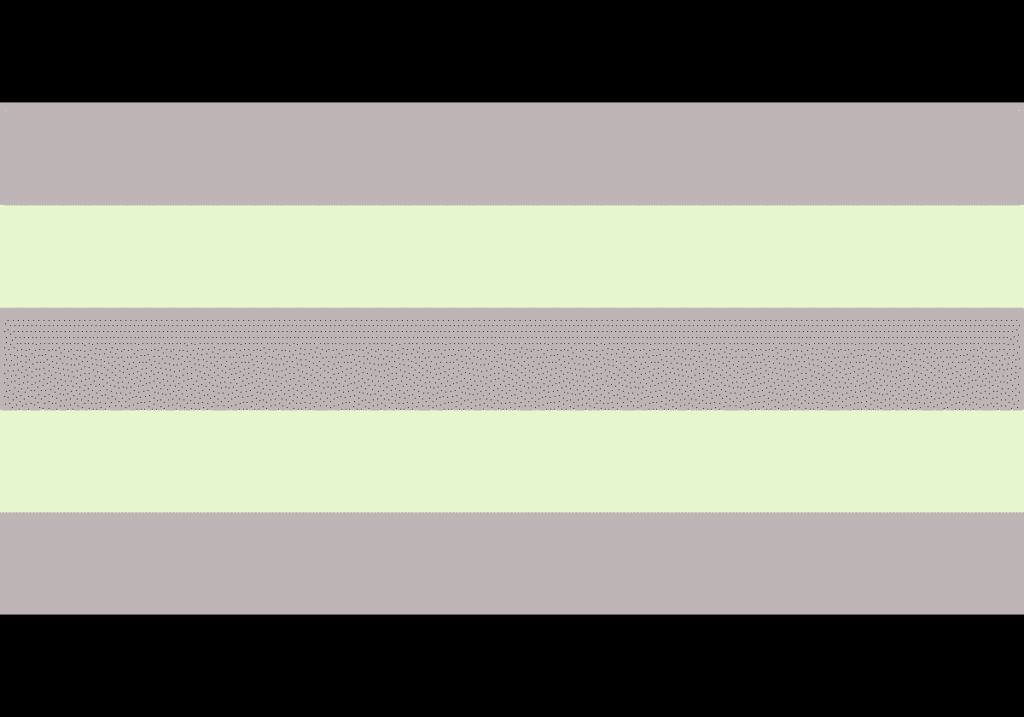
Next, this flag represents the rejection of gender. The designer Salem X created this reversible flag.
BLACK& WHITE: ABSENCE OF GENDER
GREEN: NONBINARY
15) STRAIGHT ALLY FLAG
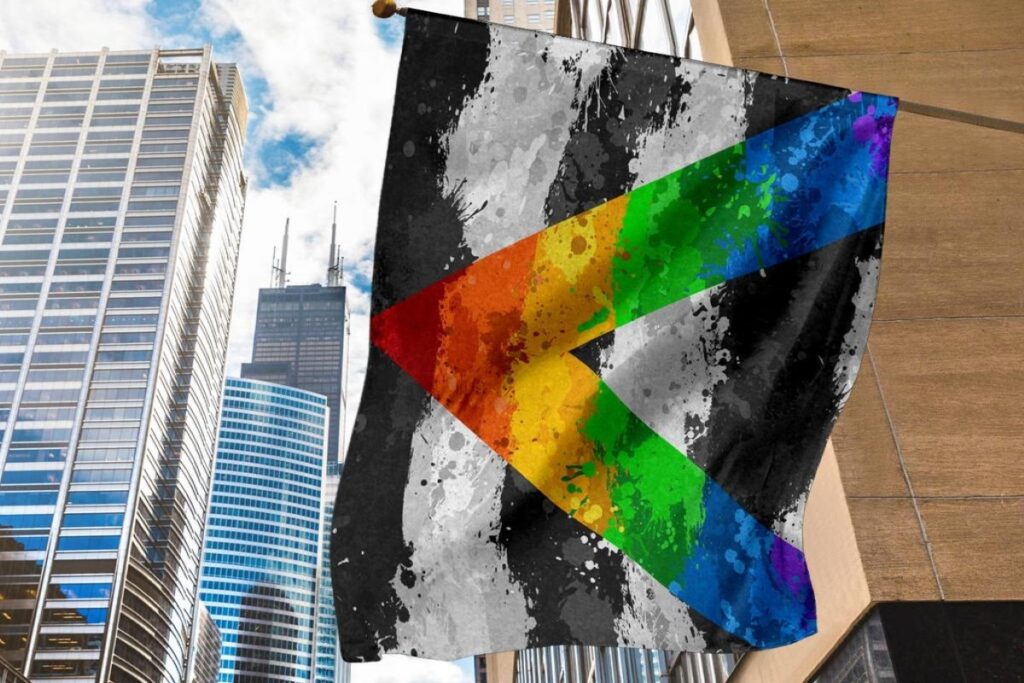
Finally, this flag represents heterosexual and cisgender people who support equal civil rights, gender equality, and LGBTQIA+ social movements. Their own flag symbolizes their support for the queer community. The black and white flag symbolizes straight people, and the traditional pride flag is a rainbow combined to show allyship to the LGBTQIA+ community.
Featured graphic: Ruta Shelke
Author
